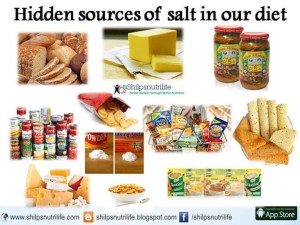#WorldSaltAwarenessWeek
Hidden sources of salt in our diet
After a diagnosis of heart disease or kidney disease, “reduce salt intake” is one of the first pieces of advice doctors offer. Sodium contributes to fluid retention, and too much sodium is one of the most common trigger. For this reason, doctors recommend to limit salt intake to 1,500 to 2,000 milligrams of sodium per day.
So how to do that?
-putting away the salt shaker,
-learning to cook with other flavors, such as garlic, citrus, and herbs, you may be avoiding obvious offenders but the culprit is often hidden salt.
Here’s a list of some of the biggest “salt traps” to avoid.
Salt Facts:
More than 90% of sodium occurs as salt (sodium chloride, NaCl).
Sodium chloride, or table salt, is approximately 40% sodium.
More than 75% of salt intake is derived from processed foods.
Cereal products including breakfast cereals, bread, cakes, and biscuits provide about a third of the salt in our diet.
Meat and meat products provide just over a quarter of the salt in our diet.
Other forms of sodium which are used as additives in food processing, usually to add flavor, texture, or as a preservative. For example, monosodium glutamate is commonly used as a flavor enhancer, also baking soda, baking powder.
Sodium and chloride levels are comparatively low in all foods which have not been processed. Since most foods in their natural state contain sodium, you need to be aware of both natural and added sodium content when you choose foods to lower your sodium intake.







